I decided to go for a winter ascent of Mt. of the Holy Cross, a very elusive peak. It’s the northernmost 14er in the Sawatch range — scarcely visible from any roads. The main difficulty isn’t due to any technicality, but is due to its location. To approach the summer trailhead in winter requires an 8-mile uphill approach. From there, it’s another 6 or 7 miles to the summit. A roughly 30-mile round-trip through deep, winter snow.
The approach to the peak is on a closed dirt road. I was also in the mood to do a multi-day trip, and I decided this would be a perfect two or three-night objective. I had recently gotten a pulk too. I hoped that would make the approach easier.
I pulled into the trailhead on the morning of New Year’s Day. The clock had turned 2021. I “pulked up,” and then started to move.
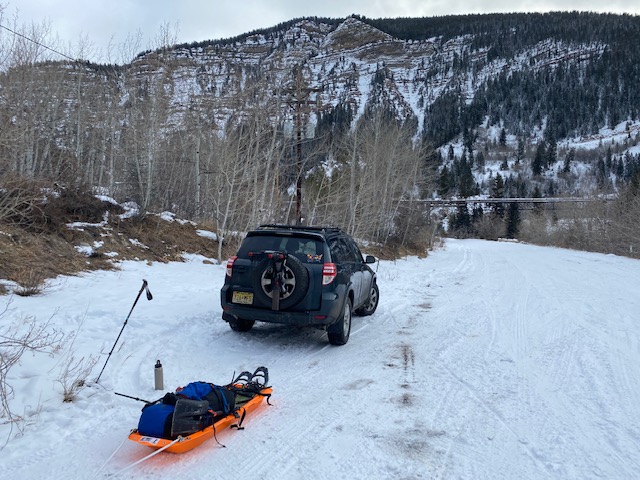
The pulk worked well for the first few miles of ascending. I didn’t have any weight on my back. When I’d stop moving, there would be no load resting on my shoulders. It was pretty novel. I did have to break trail with the pulk through some snow, but it was more efficient than a backpack.
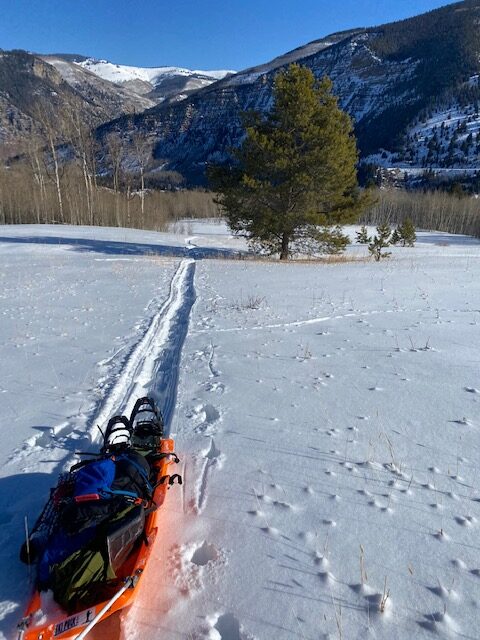
As I ascended higher in elevation, the pulk became a burden. I’d have to drag it through over a foot of snow, which left a groomed path behind me. The pulk was breaking a great trail, but at the expense of my energy. It was nice to not have weight on my back though. It’s one burden traded for another.

After 1,000 feet of elevation, I ate a burrito I got from the Leadville Mexican food truck. It hangs out in front of the laundromat and produces the best Mexican food I’ve had in the country. It’s also the cheapest food in town. Half the reason I go to Leadville is the mountains, the other half is the food truck.
Further on, after 3 or 4 miles, a snowmobile passed by. It was a welcome sight, as the snowmobile broke a nice trail. But, after a mile, the snowmobile deviated somewhere else. I’d have to break trail again.
I continued trudging along, through progressively deeper snow. I passed by the Tigiwon Hut a little way after that, closed due to covid.
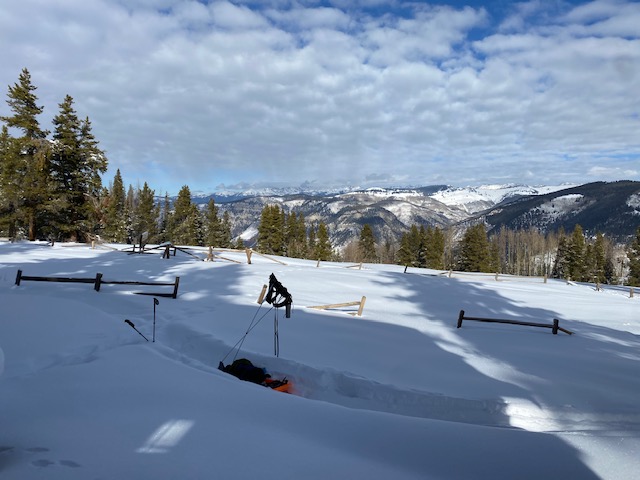
I had to put on snowshoes during the last few miles. I began cursing the pulk as I began to schlep it along with snowshoes. I was likely the first tracks through here all winter, and I was feeling it. But, the elevation gain was nearly over. I soon reached the summer trailhead.
I built a campsite. I compacted and shoveled out a nice platform for the tent. Then, I melted some water with my pain-in-the-ass liquid fuel stove, which took a dozen matches to prime. Finally, I cooked some ramen, ate, and then went to sleep.
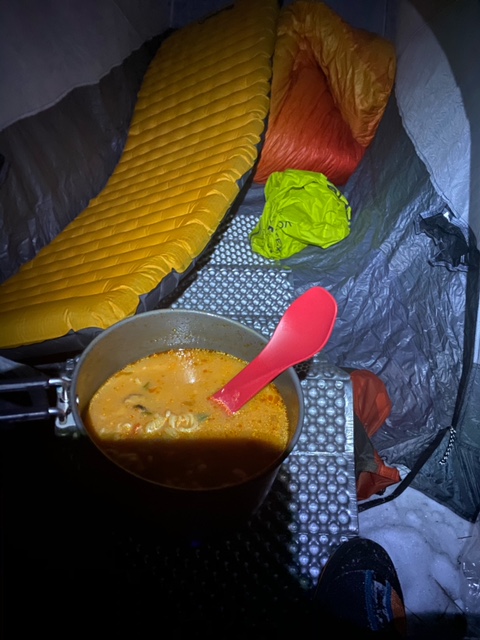
I’d have a big day tomorrow — over 4,000 feet of ascent in 6 miles, through deep Colorado powder. I set my alarm for right at dawn. I woke up to negative-degree temperatures. I ate a quick breakfast, geared up, then left my campsite and started to move.
When I reached the route, I saw footsteps! Snowshoe tracks had broken the trail beyond me. The last thing I expected to find was another climber. I reckoned my chances of seeing a yeti were higher. But, the unlikely had occurred. Someone went by in the night. I’d have a broken trail to follow now.
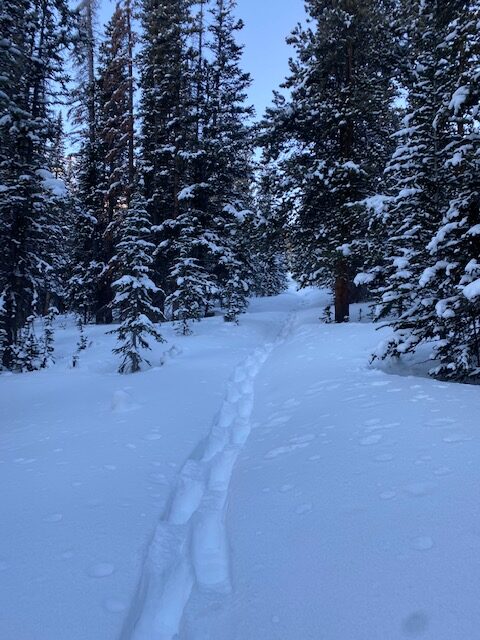
Now, some backstory: Colorado was having a bad avalanche problem. Some funky weather had left persistent slabs atop a weak layer in the snowpack. The season was barely a month underway, and there were already 3 or 4 avalanche deaths in the state. The ascent to this peak is relatively avalanche safe, except for a steep below-treeline section below Half-Moon Pass. I expected that to be fine given a lower-than-average snowpack.
As I crested near Half-Moon Pass towards Notch Mountain, I breached treeline. I was on a 10 or 15-degree snow slope. As soon as I took my first footstep, the entire snowpack thundered with a nice “whoomph.” The first, and a very strong sign of snow instability.
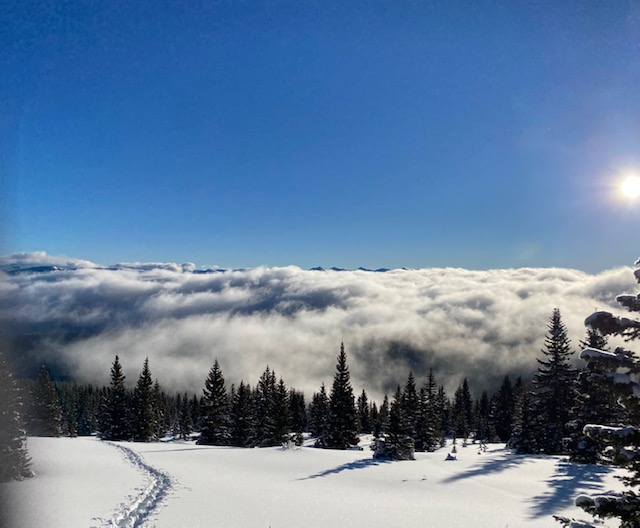
I continued on to Half-Moon Pass, and I got some of my first clear views of Mt. of the Holy Cross. My ascent route would be the straightforward ridge, running right to left.
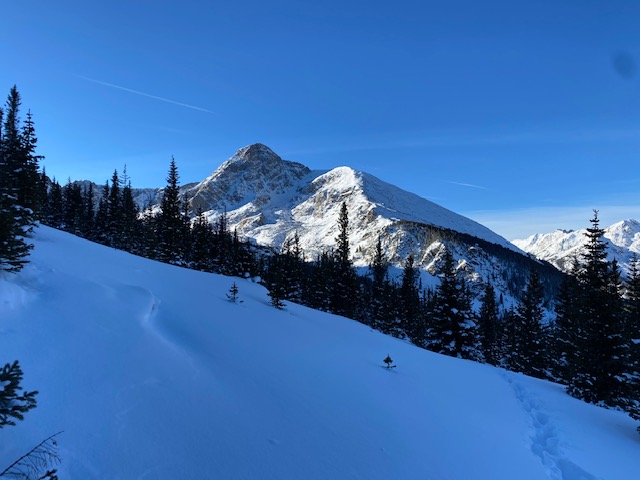
After Half-Moon Pass, the trail traversed around Notch Mountain. Then, it continued downhill back to the trees. I continued following in this person’s footsteps, and I could sense I was close behind now. I saw a fresh pee stain. I was moving faster too since he was breaking trail through deep powder. It was like hunting in a sense.
His footsteps went downhill, but not towards the direct route. It was going in a different direction. I followed the footsteps for several hundred feet of descent. It was completely away from the peak — the steps were going to the valley beneath. I decided this guy must be climbing an obscure, nearby 13er or 12er — not Holy Cross. I reversed my footsteps.
Now, I had to break my own trail to Holy Cross. I started to descend downhill to meet the ridge which would take me to the top. I was well below Half-Moon Pass now, and started to hold a traverse. Holy cross was right there, just waiting to be climbed.
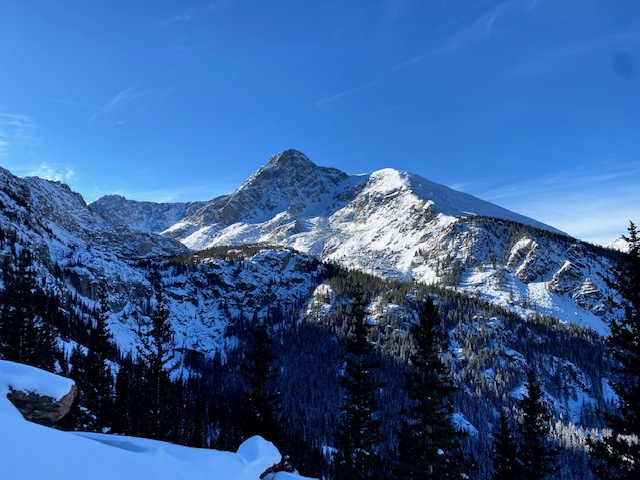
This traverse needed to cross 30 and 40-degree slopes. For the most part, these were in the trees. But then, I came across some more barren, snow-loaded slopes.
I’d have to cross these slopes, with no way around. I also saw several more of these crossings in the distance. With the avalanche problem, plus the apparent instability, I was never going to take that risk. The run-out wasn’t clean either. An avalanche would either bury me or slam my body into boulders and trees.
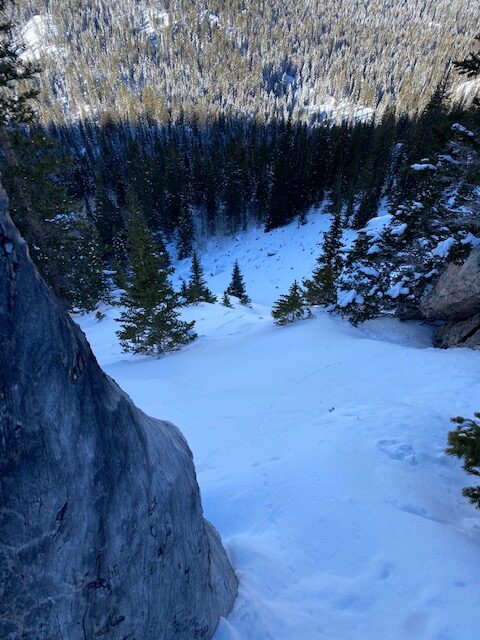
I decided to turn around. Turning around sucks sometimes, but this was one of the easiest decisions I’ve ever made. There was a voice inside of me saying there’s a good chance one of those snow slopes would avalanche while crossing it. With stakes like that, leaving is the only option.
I then realized that the person whose tracks I was following went all the way to the valley to avoid this terrain. Unlikely as it was, these slopes held avalanche danger, and he’d had the sense to go a different route. It added several more miles of trail-breaking, and more elevation gain — but he’d have a safe route to the summit.
I could’ve gone back and followed in his footsteps. But at this point, I’d done a lot of extra elevation gain with my reversing. I was tired. If I’d continued, I would’ve had a very long day.
As I reversed my footsteps, I decided to dig a few snow pits to see the avalanche problem for myself. There was a weak layer everywhere I dug. Some basic tests also had the upper layer separate and propagate across the weak layer.
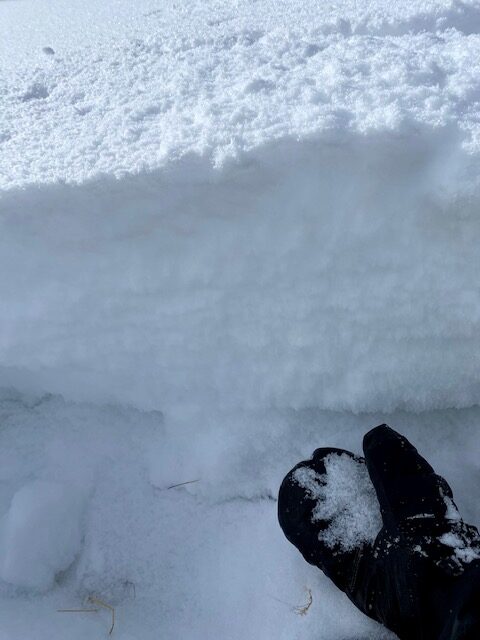
I continued to my campsite. Instead of camping again for the night, I decided to pack up. Winter camping is fun when necessary. But, my car was 8 downhill miles away. Leadville was a half-hour drive from my car. The opportunity to sleep in 70-degree rather than negative-degree temperatures tempted me, and I left.
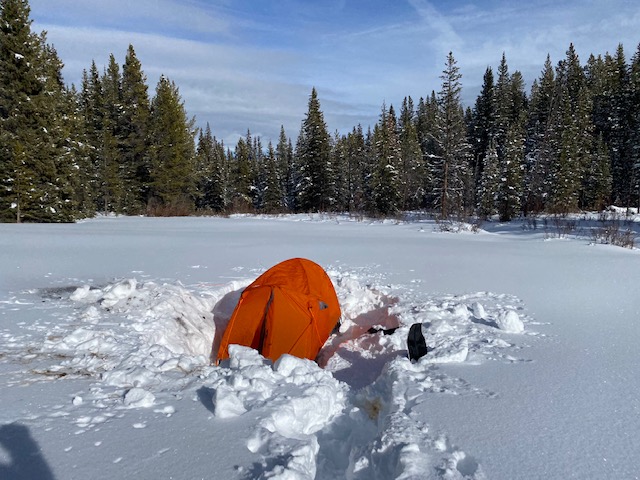
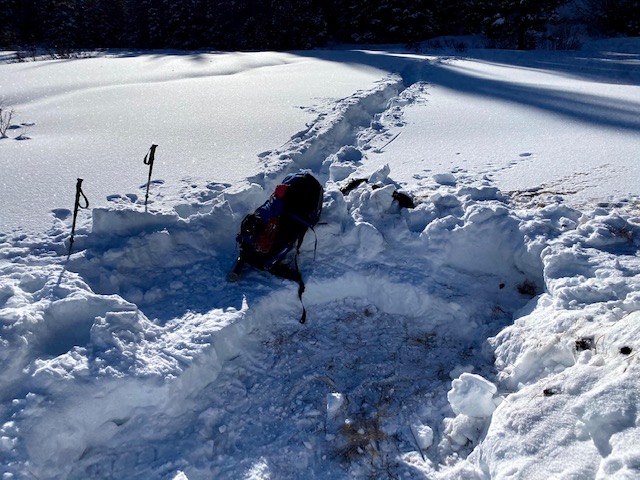
I started to drag my pulk along the road again. This was easier since my well-worn track was now there. Plus, gravity would push the pulk against my body downhill. This made for smooth going. I reached the trailhead a few hours later, in the dark, without much energy lost.
I checked 14ers.com the next morning and found out my “mystery person” did indeed summit in a single-day push. He was exhausted from the trail-breaking. He considered waking me up in my tent when he trenched past me so we could share in the duties. Darn. If he’d done that we both may have reached the summit.
All in all, the trip was a blast. It was great visiting an area that sees few winter visitors. It was a good test in decision making too. The next winter I spend here, I’ll make another go at Holy Cross — likely as a single-day push.
Here’s the trip report from the summiteer of Holy Cross on that day, the mystery trail-breaker.

Great report, nice (almost) running into you. Holy Cross was my 30th or so winter 14’er, I’m now down to just 2 left to complete the winter list of 59 (N. Maroon and Capitol remain), and I still think Holy Cross was the hardest, physically. It was a great day.
-Will
Thanks! I’ll definitely be back in CO this winter to complete Holy Cross as a single-day push as well. We’ll see if it works out. Can’t wait to get more winter 14ers as well.